Top 10
Golden City
By JASON URBANUS
Friday, December 03, 2021
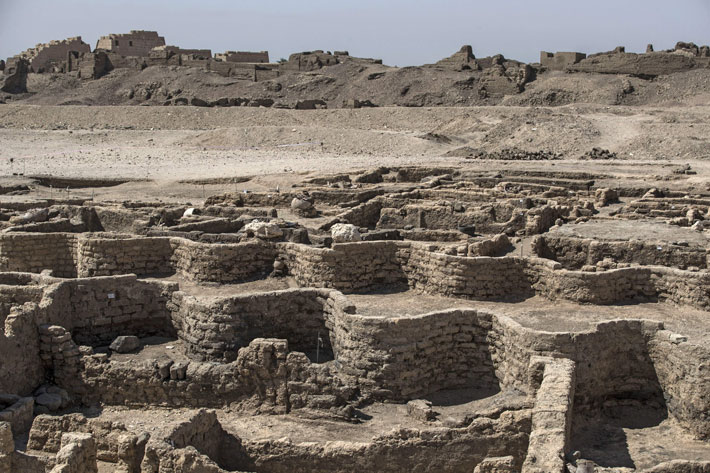 A settlement that was buried beneath the sand for thousands of years—and eluded archaeologists for centuries—is believed to be one of the largest ancient Egyptian cities ever unearthed. The site was discovered by a stroke of good luck when archaeologists began searching for the mortuary temple of the boy pharaoh Tutankhamun (r. ca. 1336–1327 B.C.) along the west bank of the Nile in Luxor. What they found instead was a well-preserved urban settlement filled with houses, streets, and walls, some of which still stand 10 feet tall. Hieroglyphic inscriptions indicate the city was called tehn Aten, or “dazzling” Aten, and that it was founded by Tutankhamun’s grandfather Amenhotep III (r. ca. 1390–1352 B.C.). “I call this the ‘Golden City’ because it dates to the reign of Amenhotep III, which was the golden age of ancient Egypt,” says project director Zahi Hawass.
A settlement that was buried beneath the sand for thousands of years—and eluded archaeologists for centuries—is believed to be one of the largest ancient Egyptian cities ever unearthed. The site was discovered by a stroke of good luck when archaeologists began searching for the mortuary temple of the boy pharaoh Tutankhamun (r. ca. 1336–1327 B.C.) along the west bank of the Nile in Luxor. What they found instead was a well-preserved urban settlement filled with houses, streets, and walls, some of which still stand 10 feet tall. Hieroglyphic inscriptions indicate the city was called tehn Aten, or “dazzling” Aten, and that it was founded by Tutankhamun’s grandfather Amenhotep III (r. ca. 1390–1352 B.C.). “I call this the ‘Golden City’ because it dates to the reign of Amenhotep III, which was the golden age of ancient Egypt,” says project director Zahi Hawass.
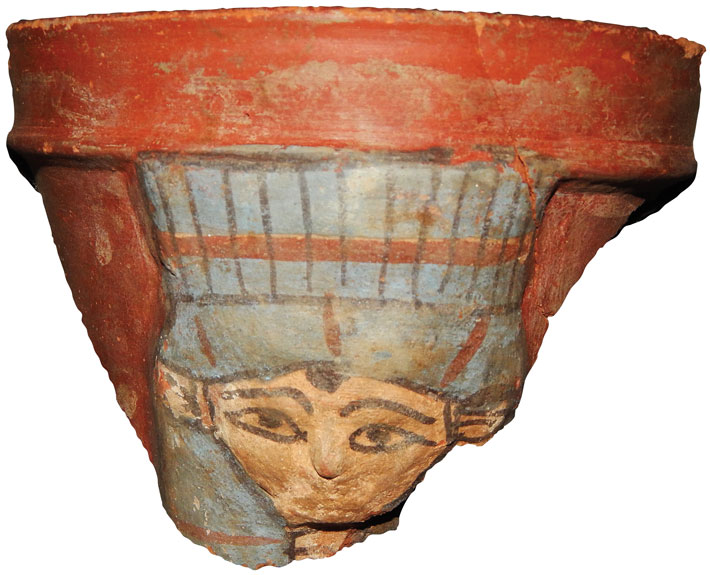 Aten was Egypt’s main administrative and industrial center. The city’s remarkable state of preservation is providing researchers with an unprecedented view of life there more than 3,000 years ago. Although only about one-third of the site has been excavated thus far, archaeologists have uncovered houses containing everyday objects including ceramic vessels, children’s dolls, and limestone gaming pieces. They have also identified bakeries, kitchens, and other areas associated with food production, as well as a vessel containing more than 20 pounds of dried meat prepped by a butcher named Luwy. There are also workshops that produced mudbricks and decorative amulets, and a residential and administrative neighborhood that was encircled by distinctive zigzag walls. Scholars do not yet understand why Aten fell into decline, but it may have been abandoned when Amenhotep III’s son, Akhenaten (r. ca. 1349–1336 B.C.), moved the Egyptian capital from Luxor to Amarna, 250 miles away.
Aten was Egypt’s main administrative and industrial center. The city’s remarkable state of preservation is providing researchers with an unprecedented view of life there more than 3,000 years ago. Although only about one-third of the site has been excavated thus far, archaeologists have uncovered houses containing everyday objects including ceramic vessels, children’s dolls, and limestone gaming pieces. They have also identified bakeries, kitchens, and other areas associated with food production, as well as a vessel containing more than 20 pounds of dried meat prepped by a butcher named Luwy. There are also workshops that produced mudbricks and decorative amulets, and a residential and administrative neighborhood that was encircled by distinctive zigzag walls. Scholars do not yet understand why Aten fell into decline, but it may have been abandoned when Amenhotep III’s son, Akhenaten (r. ca. 1349–1336 B.C.), moved the Egyptian capital from Luxor to Amarna, 250 miles away.
World’s First Artists
By ERIC A. POWELL
Friday, December 03, 2021
 The world’s earliest rock art may have been made by two creative children who lived in Tibet between 226,000 and 169,000 years ago. The young artists, probably either Neanderthals or members of the related Denisovan species, left a series of closely grouped handprints and footprints on an outcrop of a type of limestone called travertine. Travertine, which builds up around mineral springs, is initially soft enough to hold impressions. These can eventually harden after the spring changes course. Other ancient prints have been found preserved in travertine near the hot spring where the children’s prints were discovered, says Guangzhou University geologist and environmental archaeologist David Zhang. “The local people associate them with the Buddha,” he says, “but they were puzzled by these prints because they are so small.”
The world’s earliest rock art may have been made by two creative children who lived in Tibet between 226,000 and 169,000 years ago. The young artists, probably either Neanderthals or members of the related Denisovan species, left a series of closely grouped handprints and footprints on an outcrop of a type of limestone called travertine. Travertine, which builds up around mineral springs, is initially soft enough to hold impressions. These can eventually harden after the spring changes course. Other ancient prints have been found preserved in travertine near the hot spring where the children’s prints were discovered, says Guangzhou University geologist and environmental archaeologist David Zhang. “The local people associate them with the Buddha,” he says, “but they were puzzled by these prints because they are so small.”
Zhang and his colleagues used uranium series dating, which examines trace amounts of uranium and thorium in calcium carbonate deposits such as travertine, to determine when the prints were left on the outcropping’s surface. Since uranium decays to thorium at a known rate, the researchers were able to calculate the age of the travertine from the ratio of the two elements. “I was shocked by the date,” says Zhang. “They are so early and there is no utilitarian explanation for how they are grouped together. They had to have been deliberately composed.” Zhang acknowledges that some might consider the prints childish doodles rather than true art. “What is play and what is art?” he asks. “We think these prints are both.”
The First Americans
By ERIC A. POWELL
Friday, December 03, 2021
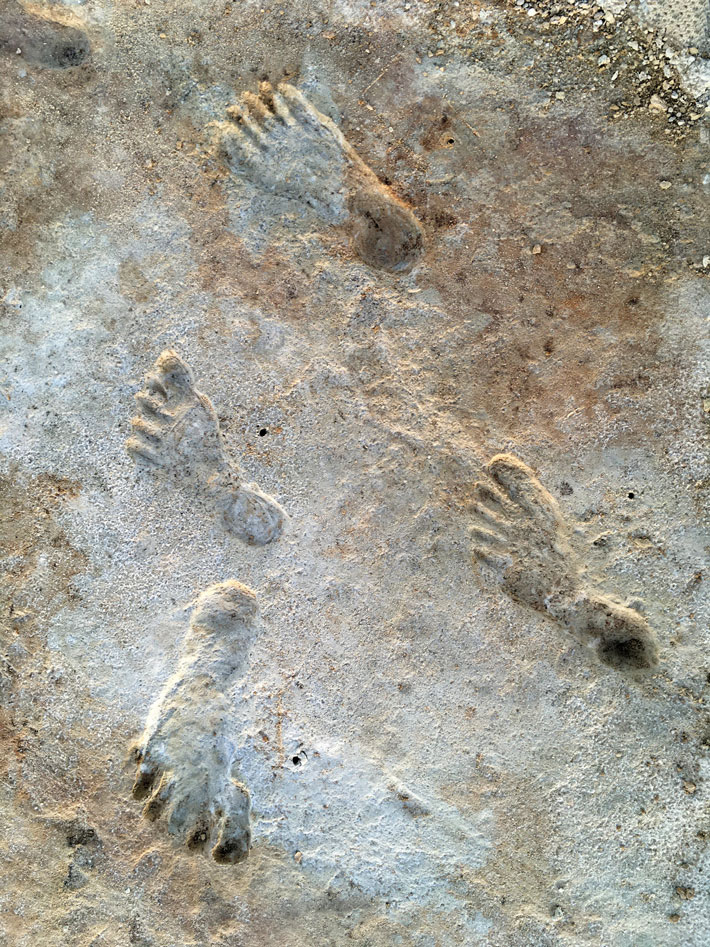 Over the past two decades, archaeologists have discovered a number of sites that show that people first arrived in the Americas as early as 16,000 years ago. Some scholars have explored sites that have yielded even earlier dates, but other researchers have questioned the legitimacy of these discoveries, arguing that artifacts recovered from them are not unambiguously the work of human hands. Now, radiocarbon dating of material associated with fossilized human footprints at White Sands National Park has shown that people were living in North America up to 23,000 years ago.
Over the past two decades, archaeologists have discovered a number of sites that show that people first arrived in the Americas as early as 16,000 years ago. Some scholars have explored sites that have yielded even earlier dates, but other researchers have questioned the legitimacy of these discoveries, arguing that artifacts recovered from them are not unambiguously the work of human hands. Now, radiocarbon dating of material associated with fossilized human footprints at White Sands National Park has shown that people were living in North America up to 23,000 years ago.
The prints are part of hundreds of fossilized human trackways archaeologists have found at the park that were left in what were once muddy surfaces surrounding an extinct lake. A team including Cornell University archaeologist Tommy Urban identified a series of such trackways, left mainly by teenagers and younger children, that were superimposed on top of each other over the course of millennia. Radiocarbon dating of aquatic plant seeds found below and above six of these trackways shows they were created between 23,000 and 21,000 years ago. “Scholars can question whether a stone or bone artifact was actually shaped by humans,” says Urban, “but there’s no mistaking who made a human footprint.”
Earliest Leatherworkers
By DANIEL WEISS
Friday, December 03, 2021
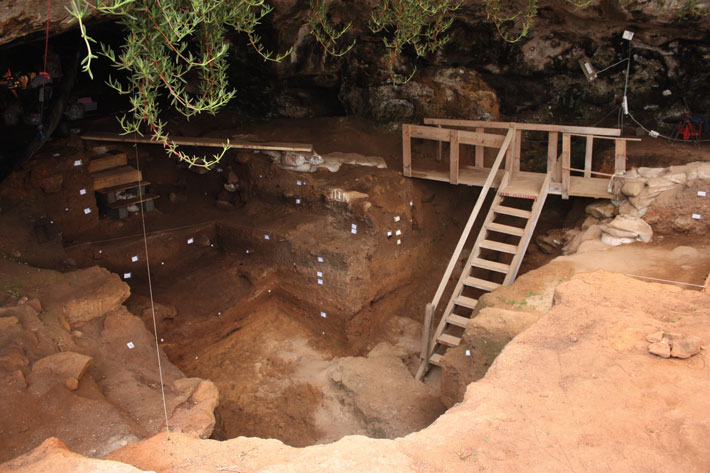
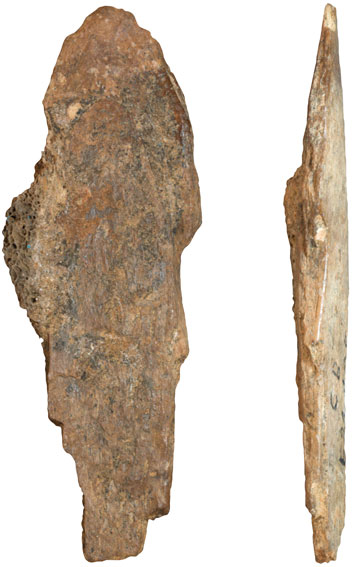 While sorting through some 12,000 bone fragments excavated from Contrebandiers Cave near the Atlantic coast of Morocco, archaeologist Emily Hallett of the Max Planck Institute for the Science of Human History noticed that some were smooth and shiny, as if they had been intentionally shaped by human hands. Upon consultation with colleagues, she determined that 62 of the fragments are bone tools dating to between 120,000 and 90,000 years ago. These include a number of tools made from animal rib bones of a type well known for its use in fur and leatherworking. “Once you have an animal skin, there are a lot of steps that have to be taken to process it so it’s supple, smooth, and ready to wear,” says Hallett. “These tools remove the connective tissues and fats from the skin without piercing and damaging it.”
While sorting through some 12,000 bone fragments excavated from Contrebandiers Cave near the Atlantic coast of Morocco, archaeologist Emily Hallett of the Max Planck Institute for the Science of Human History noticed that some were smooth and shiny, as if they had been intentionally shaped by human hands. Upon consultation with colleagues, she determined that 62 of the fragments are bone tools dating to between 120,000 and 90,000 years ago. These include a number of tools made from animal rib bones of a type well known for its use in fur and leatherworking. “Once you have an animal skin, there are a lot of steps that have to be taken to process it so it’s supple, smooth, and ready to wear,” says Hallett. “These tools remove the connective tissues and fats from the skin without piercing and damaging it.”
Amid the assemblage, Hallett also identified bones of carnivores such as sand foxes, golden jackals, and wildcats that had marks indicating they had been skinned for their hides or fur. Together, the carnivore bones and bone tools appear to provide the earliest known evidence of people making clothes. This fits well with previous genetic studies of clothing lice that suggested clothing was first worn by humans in Africa up to 170,000 years ago. Hallett says it’s also possible that people at Contrebandiers Cave produced leather to string small beads together to make symbolic personal ornaments. Pierced shells from the snail genus Nassarius dating to around the same time as the bones have also been found in the cave.
Oldest Animal Art
By JARRETT A. LOBELL
Friday, December 03, 2021
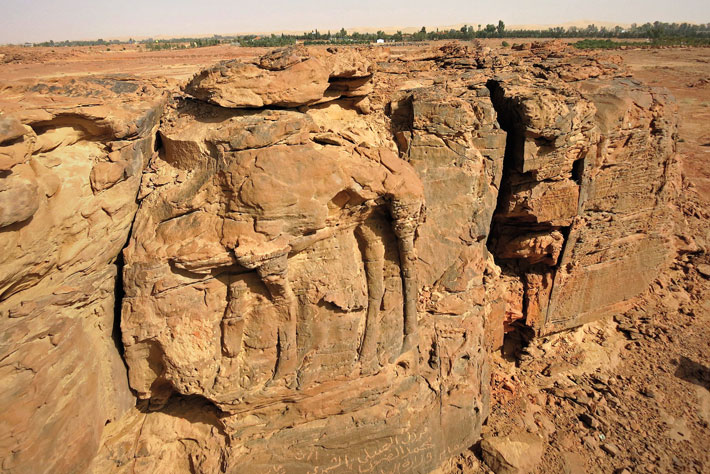 Twelve panels depicting images of camels and wild donkeys are now known to be the oldest life-size animal reliefs in the world. By using techniques such as analyzing tool marks and erosion, as well as radiocarbon dating associated artifacts, researchers have dated the reliefs at what is known as the Camel Site to the middle of the sixth millennium B.C.—some 5,000 years earlier than they had originally thought. During the Neolithic period (ca. 8000–3000 B.C.), northern Arabia was much wetter than it is now, and nomads herded sheep, cattle, and goats and hunted abundant wildlife. Animals would have had a crucial role in the herders’ existence, which may help explain why they created the massive reliefs.
Twelve panels depicting images of camels and wild donkeys are now known to be the oldest life-size animal reliefs in the world. By using techniques such as analyzing tool marks and erosion, as well as radiocarbon dating associated artifacts, researchers have dated the reliefs at what is known as the Camel Site to the middle of the sixth millennium B.C.—some 5,000 years earlier than they had originally thought. During the Neolithic period (ca. 8000–3000 B.C.), northern Arabia was much wetter than it is now, and nomads herded sheep, cattle, and goats and hunted abundant wildlife. Animals would have had a crucial role in the herders’ existence, which may help explain why they created the massive reliefs.
Archaeologist Maria Guagnin of the Max Planck Institute for the Science of Human History explains that the site was clearly used for centuries, and possibly even millennia, and new reliefs were periodically added or old ones re-carved when details began to fade. “I wonder if the site was visited regularly, but reliefs were only added on special occasions,” she says. “Or was it only visited for special occasions, when new reliefs were added or existing ones repaired?” Guagnin has no question, however, regarding the mastery displayed by the Neolithic artists, who worked high atop cliffs where they would never have been able to see the entire animal while carving it. “The level of naturalism and detail is astonishing,” she says, “and the technical skill and community effort involved in the creation of these reliefs is evidence of the importance of rock art in the social and symbolic life of the Neolithic herders of northern Arabia.”
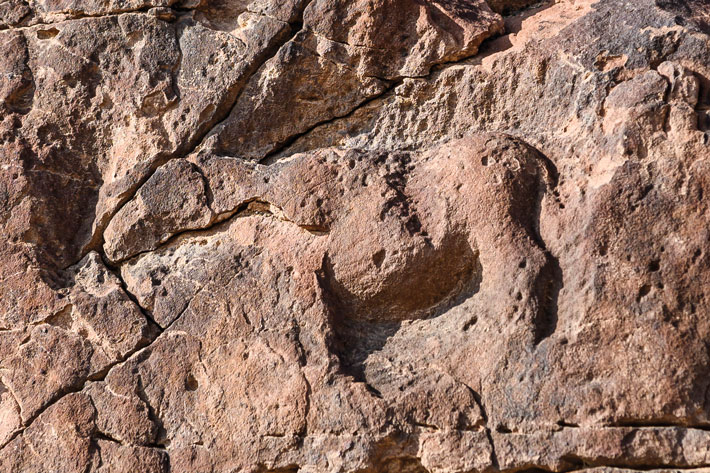
Advertisement
Advertisement
IN THIS ISSUE
Advertisement

Recent Issues
-
 May/June 2024
May/June 2024
-
 March/April 2024
March/April 2024
-
 January/February 2024
January/February 2024
-
 November/December 2023
November/December 2023
-
 September/October 2023
September/October 2023
-
 July/August 2023
July/August 2023
-
 May/June 2023
May/June 2023
-
 March/April 2023
March/April 2023
-
 January/February 2023
January/February 2023
-
 November/December 2022
November/December 2022
-
 September/October 2022
September/October 2022
-
 July/August 2022
July/August 2022
-
 May/June 2022
May/June 2022
-
 March/April 2022
March/April 2022
-
 January/February 2022
January/February 2022
-
 November/December 2021
November/December 2021
-
 September/October 2021
September/October 2021
-
 July/August 2021
July/August 2021
-
 May/June 2021
May/June 2021
-
 March/April 2021
March/April 2021
-
 January/February 2021
January/February 2021
-
 November/December 2020
November/December 2020
-
 September/October 2020
September/October 2020
-
 July/August 2020
July/August 2020
-
 May/June 2020
May/June 2020
-
 March/April 2020
March/April 2020
-
 January/February 2020
January/February 2020
-
 November/December 2019
November/December 2019
-
 September/October 2019
September/October 2019
-
 July/August 2019
July/August 2019
-
 May/June 2019
May/June 2019
-
 March/April 2019
March/April 2019
-
 January/February 2019
January/February 2019
-
 November/December 2018
November/December 2018
-
 September/October 2018
September/October 2018
-
 July/August 2018
July/August 2018
-
 May/June 2018
May/June 2018
-
 March/April 2018
March/April 2018
-
 January/February 2018
January/February 2018
-
 November/December 2017
November/December 2017
-
 September/October 2017
September/October 2017
-
 July/August 2017
July/August 2017
-
 May/June 2017
May/June 2017
-
 March/April 2017
March/April 2017
-
 January/February 2017
January/February 2017
-
 November/December 2016
November/December 2016
-
 September/October 2016
September/October 2016
-
 July/August 2016
July/August 2016
-
 May/June 2016
May/June 2016
-
 March/April 2016
March/April 2016
-
 January/February 2016
January/February 2016
-
 November/December 2015
November/December 2015
-
 September/October 2015
September/October 2015
-
 July/August 2015
July/August 2015
-
 May/June 2015
May/June 2015
-
 March/April 2015
March/April 2015
-
 January/February 2015
January/February 2015
-
 November/December 2014
November/December 2014
-
 September/October 2014
September/October 2014
-
 July/August 2014
July/August 2014
-
 May/June 2014
May/June 2014
-
 March/April 2014
March/April 2014
-
 January/February 2014
January/February 2014
-
 November/December 2013
November/December 2013
-
 September/October 2013
September/October 2013
-
 July/August 2013
July/August 2013
-
 May/June 2013
May/June 2013
-
 March/April 2013
March/April 2013
-
 January/February 2013
January/February 2013
-
 November/December 2012
November/December 2012
-
 September/October 2012
September/October 2012
-
 July/August 2012
July/August 2012
-
 May/June 2012
May/June 2012
-
 March/April 2012
March/April 2012
-
 January/February 2012
January/February 2012
-
 November/December 2011
November/December 2011
-
 September/October 2011
September/October 2011
-
 July/August 2011
July/August 2011
-
 May/June 2011
May/June 2011
-
 March/April 2011
March/April 2011
-
 January/February 2011
January/February 2011
Advertisement






